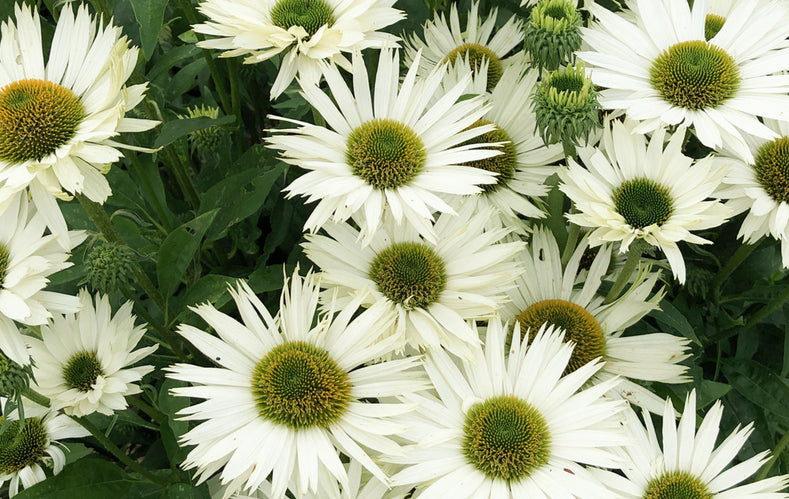Echinacea, also known as Coneflowers, are herbaceous perennials of the daisy family. They have large daisy-like flower heads with drooping petals and brown cone-shaped centres, giving them their unusual name. They are summer blooming flowers that are deer resistant and loved by pollinators. Echinacea is native to the US and has become popular as an ornamental garden plant. In nature they are usually found along outer woodland areas. They grow best in full sun, but will tolerate partial shade. A spot with morning or afternoon sun is ideal for them. They grow deep roots once established, so they can grow even in rocky soils.
In fact, Coneflowers are easy to grow, long-lived and will thrive in a variety of soils except for wet ones. The secret to growing coneflowers is simple: they like well-drained soil. That's it! These plants can survive in a variety of soils, but the best ones are loose and gritty.
Echinacea is hardy in USDA Zones 3 to 8. This plant can live for more than two years and produces flowers over several seasons. The delightful Echinacea flowers are a wonderful addition to any garden. They are drought tolerant once they're established, but if you still want lots of flowers it's best to water during dry spells.
Quick Guide
- Choose a spot with Full or Partial Sun.
- Prepare well draining soil.
- Space them apart according to variety size.
- Water regularly until roots establish, then reduce gradually.
- Do not move them once established.
When planting them, keep in mind that these are clump-forming plants that can grow fairly tall. Depending on your chosen variety, space them apart as much as their estimated width at full growth. They generally don’t need to be staked as their stems are sturdy, although occasionally some plants may grow floppy in the shade. In that case, a single stake would suffice to help support one plant.
When your plants are young, you’ll need to water them regularly until their roots establish. After that, you can gradually reduce watering from every day to every other day, to weekly, bi-weekly, etc, until you only need to water them during drought periods. They don’t need fertilizer, and should be fine with just a compost mulch in Spring.
Growing echinacea is a great way to add color and diversity to your garden. You can easily set yourself up for success with Echinacea as they are very tolerant plants. They can handle any average well draining soil and grow best in full sun, but will still grow great in partial sun. They do not need deadheading in order to bloom again, though you might want to remove spent flowers to revive their good looks after they have finished flowering. These beauties also make excellent cut flowers, so you may want to keep them around for this as well.

